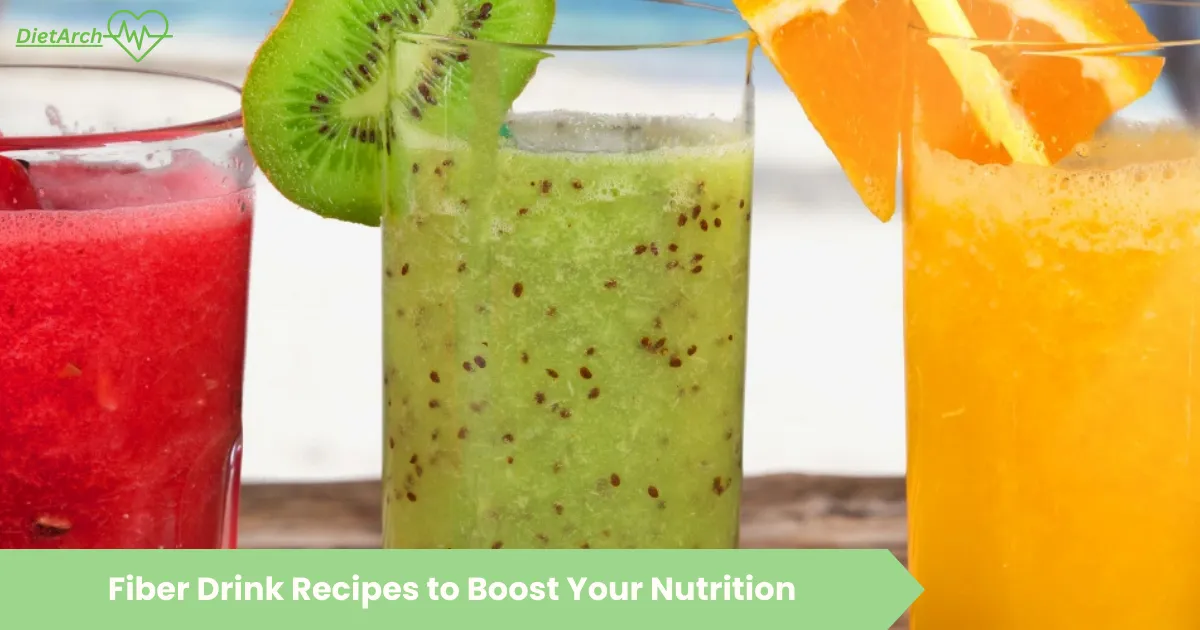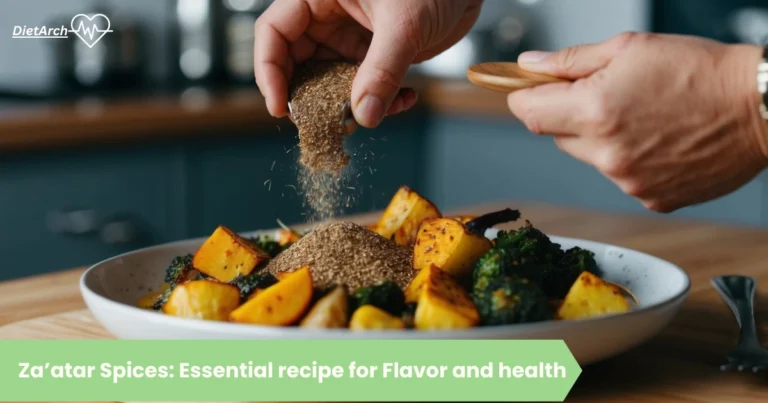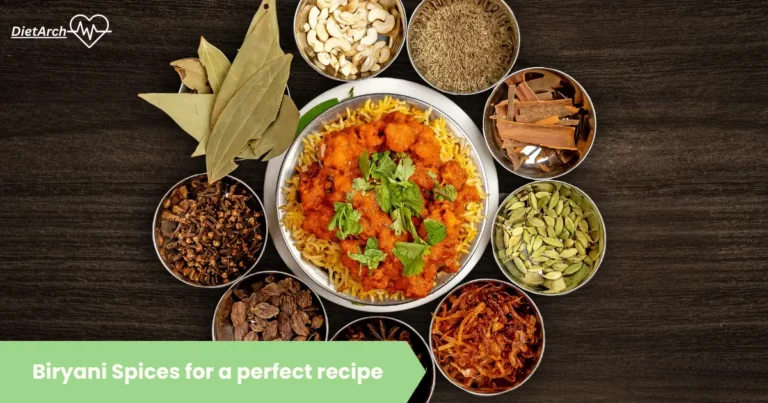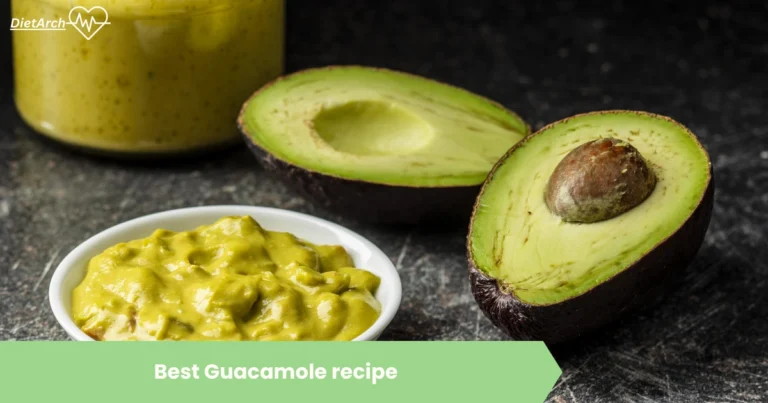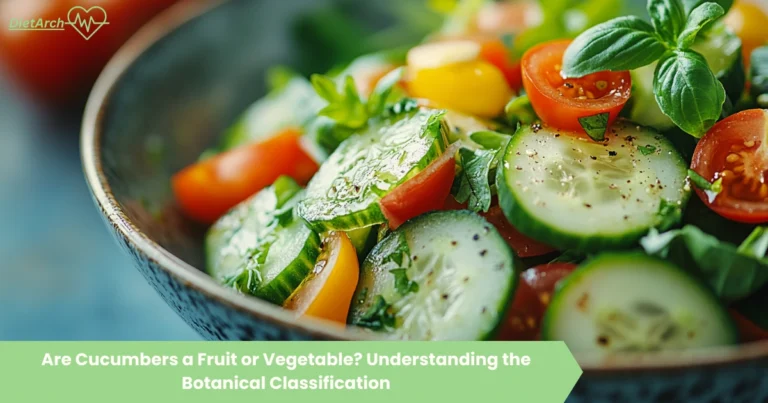High-Fiber Drink Recipes to Boost Your Nutrition
High-fiber drinks are an excellent way to boost daily fiber intake while enjoying some delicious combinations. People often look for easy and healthy recipes that can provide energy and support digestive health. In this article we have listed them. These recipes not only taste good but also pack a nutritional punch, making them a great addition to your diet.
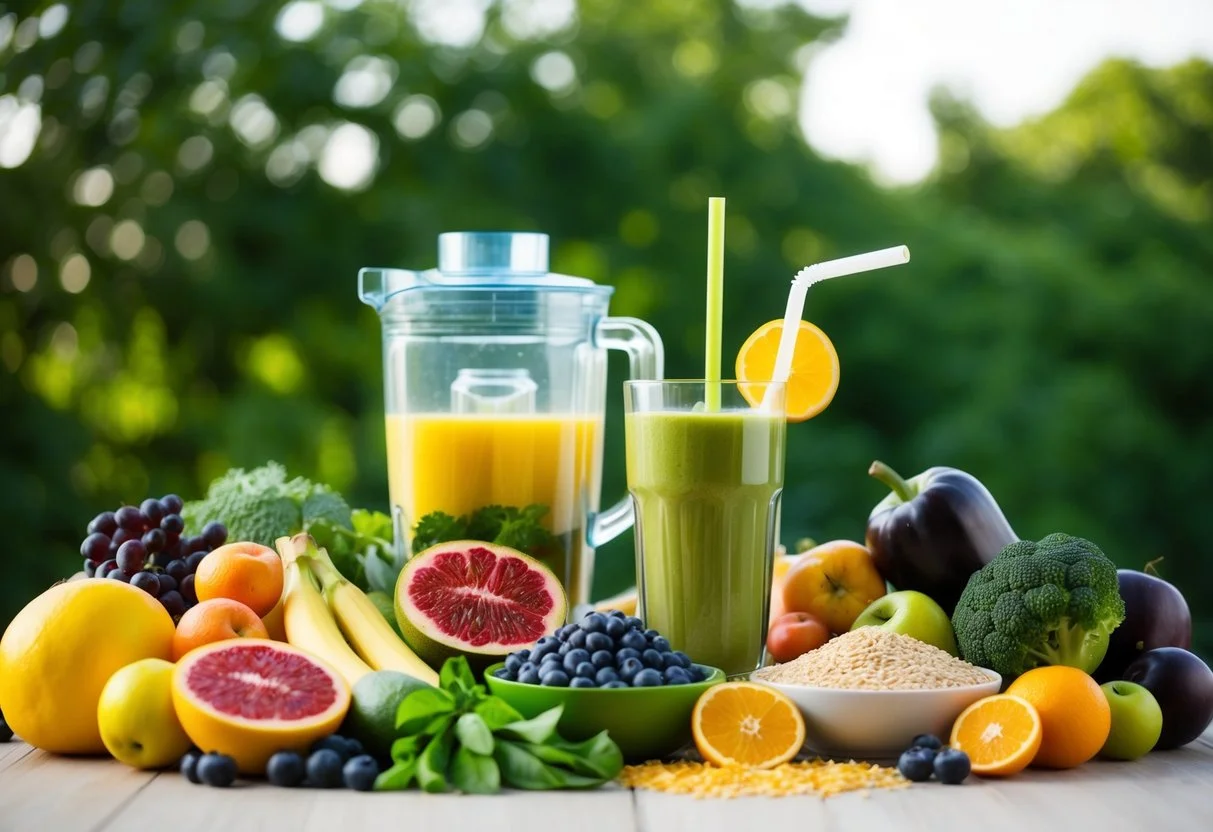
Creating a high-fiber drink is simple and fun. By using a variety of fruits, vegetables, and other fiber-rich ingredients, anyone can create satisfying smoothies that help meet daily dietary needs. The right combinations can enhance flavors while ensuring that each drink delivers optimal health benefits.
Key Takeaways
High-Fiber Drink Recipes
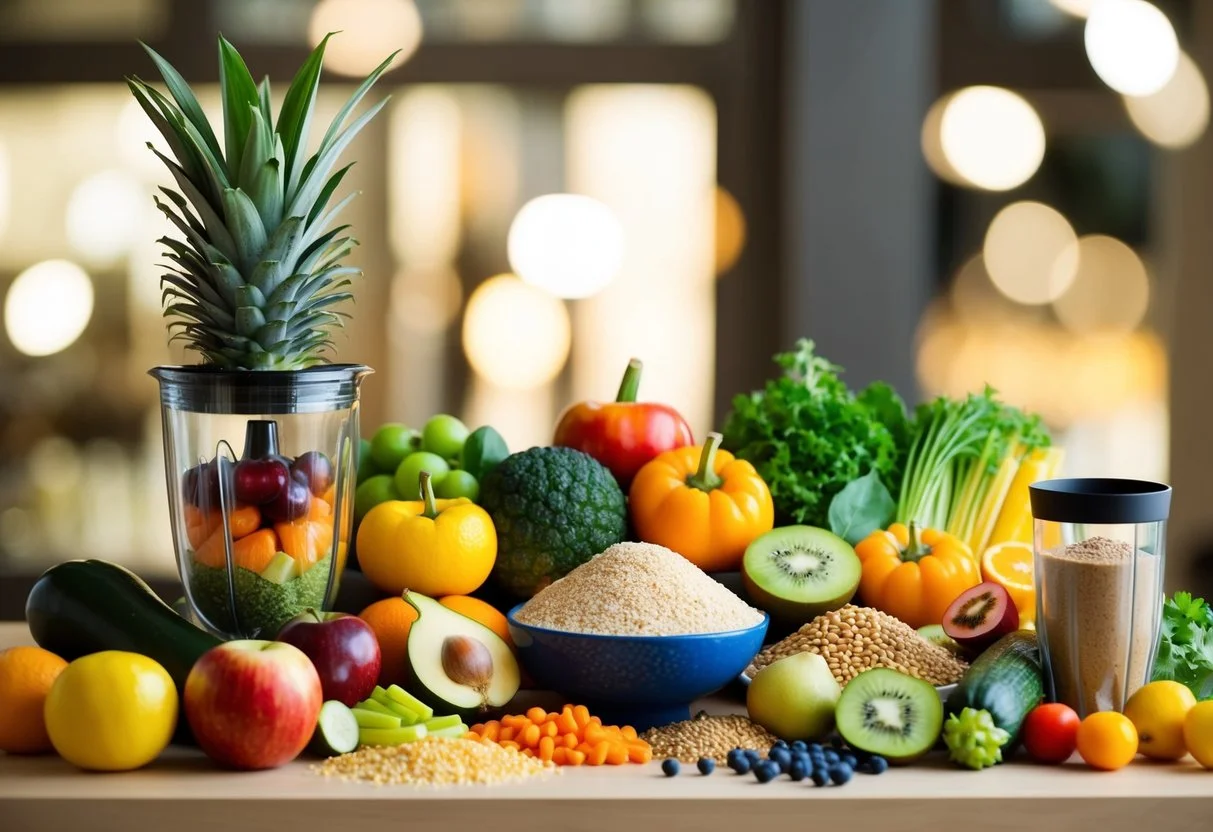
High-fiber drinks are a great way to support digestive health and maintain energy levels. They can be delicious and nutritious, making it easy to incorporate more fiber into one’s diet. Below are some specific types of nutrient-dense high-fiber drink recipes.
Green Smoothies for Digestive Health
Green smoothies are packed with nutrients and fiber, making them ideal for digestive health. A typical spinach smoothie combines fresh spinach, a banana, and unsweetened almond milk.
Spinach is a powerhouse of vitamins and contains fiber to aid digestion. Combining it with a frozen banana adds creaminess and natural sweetness.
Another nutritious option is the anti-inflammatory cherry-spinach smoothie. It mixes cherries, spinach, and a dash of Greek yogurt. The cherries offer fiber and antioxidants, while Greek yogurt adds protein and probiotics.
Berry-Based Fiber-Rich Smoothies
Berry-based smoothies are not only delicious but also rich in fiber. A mixed-berry breakfast smoothie can combine blueberries, raspberries, and blackberries. Each berry packs fiber and antioxidants that support overall health.
For a creamy texture, one can add a scoop of low-fat kefir to the mix. The berry-kefir smoothie provides both probiotics and fiber. Each serving can contain about 150 calories, with minimal added sugar.
Using frozen berries can enhance the flavor while keeping the drink cool and refreshing. The natural sugars from fruits help balance the drink without extra sweeteners.
Protein-Packed Smoothies With a Fiber Twist
Protein-packed smoothies often contain a high-protein shake base, ensuring you stay full and satisfied. A chocolate-peanut butter protein shake can be a delicious way to include fiber.
By blending together a banana, a scoop of protein powder, and a tablespoon of peanut butter, the drink becomes a nutritious meal replacement. This combination offers protein, healthy fats, and fiber, supporting muscle repair and digestive health.
Adding a handful of chia seeds increases fiber content further. This should add a pleasant crunch and thick texture without significantly increasing calories.
Exotic Flavors: Tropical High-Fiber Smoothies
Tropical smoothies bring an interesting twist to high-fiber drinks. A mango smoothie can easily be made by blending ripe mango chunks with almond milk and spinach. Mangoes provide sweetness and fiber, while spinach ensures a nutrient boost.
For something more adventurous, a tropical green smoothie using pineapple can offer a refreshing taste. Blending pineapple, kale, and coconut water creates a hydrating drink full of fiber.
These smoothies can serve as an excellent way to enjoy the flavors of summer all year round while reaping the benefits of dietary fiber. They can provide a mix of vitamins and keep one feeling satisfied.
Essential Components of High-Fiber Drinks
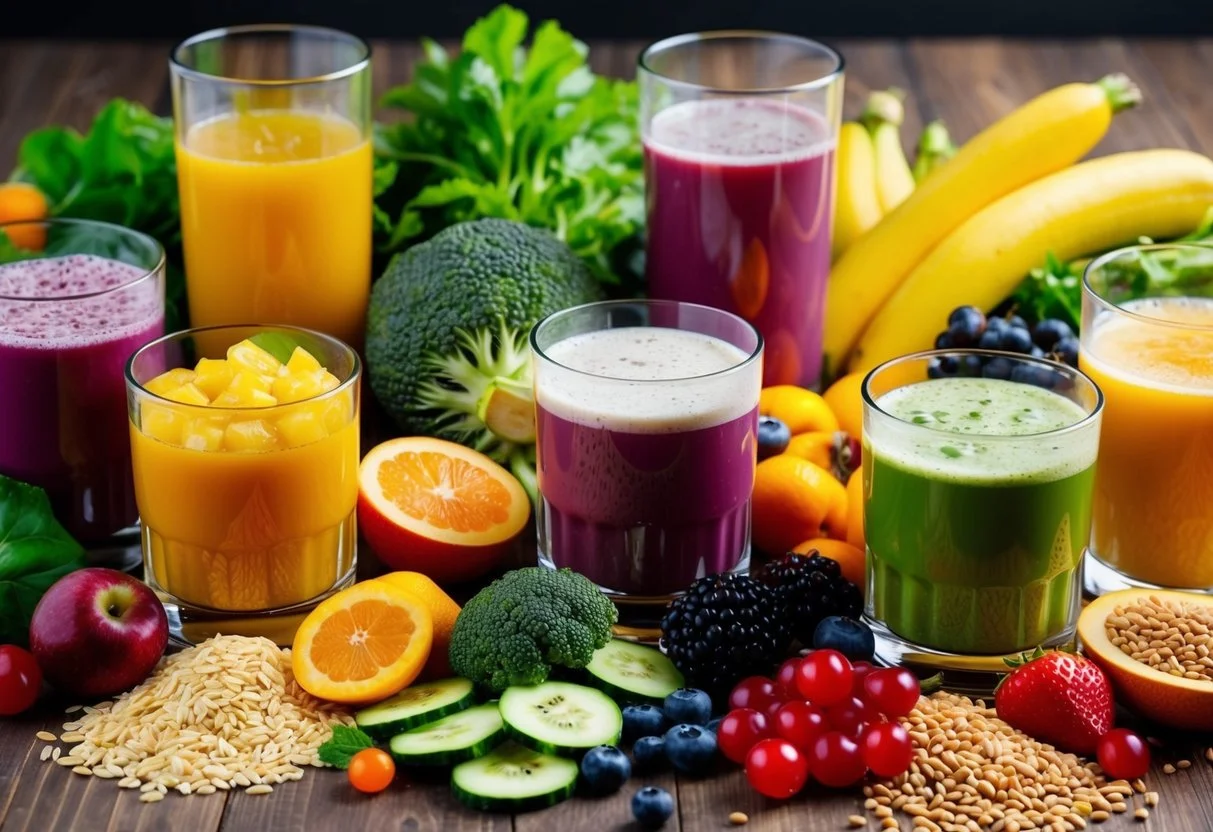
High-fiber drinks should include ingredients that promote digestive health, provide essential nutrients, and enhance overall well-being. Key components include various sources of fiber, protein, healthy fats, and suitable liquids to create a balanced and nutritious drink.
What is Fiber and Its Benefits
Fiber is an essential part of a healthy diet. It plays a crucial role in digestion, helping to regulate bowel movements. High-fiber drinks can improve gut health by promoting the growth of beneficial bacteria.
There are two main types of fiber: soluble and insoluble. Soluble fiber helps lower cholesterol and stabilize blood sugar levels. Insoluble fiber aids in digestion by adding bulk to stool. Incorporating both types into drinks can maximize health benefits.
Including fiber in drinks can also aid in weight management. Fiber-rich drinks can make a person feel full longer, reducing the likelihood of overeating later in the day. It also help to reduce visceral fat.
Selecting Fruits and Vegetables for Fiber
Choosing the right fruits and vegetables can significantly boost the fiber content of drinks. Many fruits are rich in soluble fiber, which helps with digestion. Some excellent choices are:
Vegetables like spinach and carrots can also add fiber without overpowering the drink’s taste. Leafy greens, such as kale, bring added nutrients while enhancing the fiber content. Several weird fruits are also fiber rich.
Incorporating Nuts and Seeds
Nuts and seeds are excellent additions to high-fiber drinks. They provide both fiber and healthy fats. Including options such as:
Incorporating these ingredients ensures the drink is not only fiber-rich but also satisfying and nutritious.
The Role of Liquids: Milk and Milk Alternatives
The liquid base is important for blending fibers and other ingredients seamlessly. Dairy milk provides protein and calcium; however, many prefer alternatives.
Both options can support digestion when combined with fiber-rich ingredients. It’s important to choose unsweetened varieties to avoid added sugars, which can counteract the benefits of high-fiber drinks.
Building a Balanced Flavor Profile
Creating a balanced flavor profile in high-fiber drinks is essential for enhancing taste and enjoyment. By thoughtfully combining different tastes and adding specific ingredients, each drink can become a delightful experience.
Combining Sweet and Savory Ingredients
Sweet and savory ingredients work well together to create a more complex flavor. For example, bananas add natural sweetness, while ingredients like spinach and avocado introduce a creamy texture and a hint of savoriness.
Strawberries can also provide a bright, fruity flavor that pairs nicely with nut butter, such as peanut butter. The nuttiness complements the sweetness, creating a rich blend. A touch of chocolate can enhance the flavor even more, making the drink feel indulgent without being unhealthy. Low carb fruits can be a good choice for combination.
Including vegetables can also balance flavors. Leafy greens like spinach not only boost nutrition but also make the drink more satisfying. Mixing these tastes allows for a versatile smoothie that satisfies different preferences.
Utilizing Spices and Herbs for Enhanced Taste and Nutrition
Incorporating spices and herbs can elevate both flavor and nutrition in high-fiber drinks. Fresh ginger is an excellent addition. It offers a spicy kick and is known for its anti-inflammatory properties. Adding ginger can help with digestion too.
Including herbs like mint or basil can provide refreshing notes, helping to brighten up the drink. These additions make smoothies light and enjoyable.
Using spices such as cinnamon adds warmth and depth without extra calories. It’s a great way to mask any bitterness from greens like spinach. Together, these ingredients make a smoothie both tasty and healthful, showcasing the benefits of a well-composed flavor profile.
Tips for Perfect High-Fiber Drinks
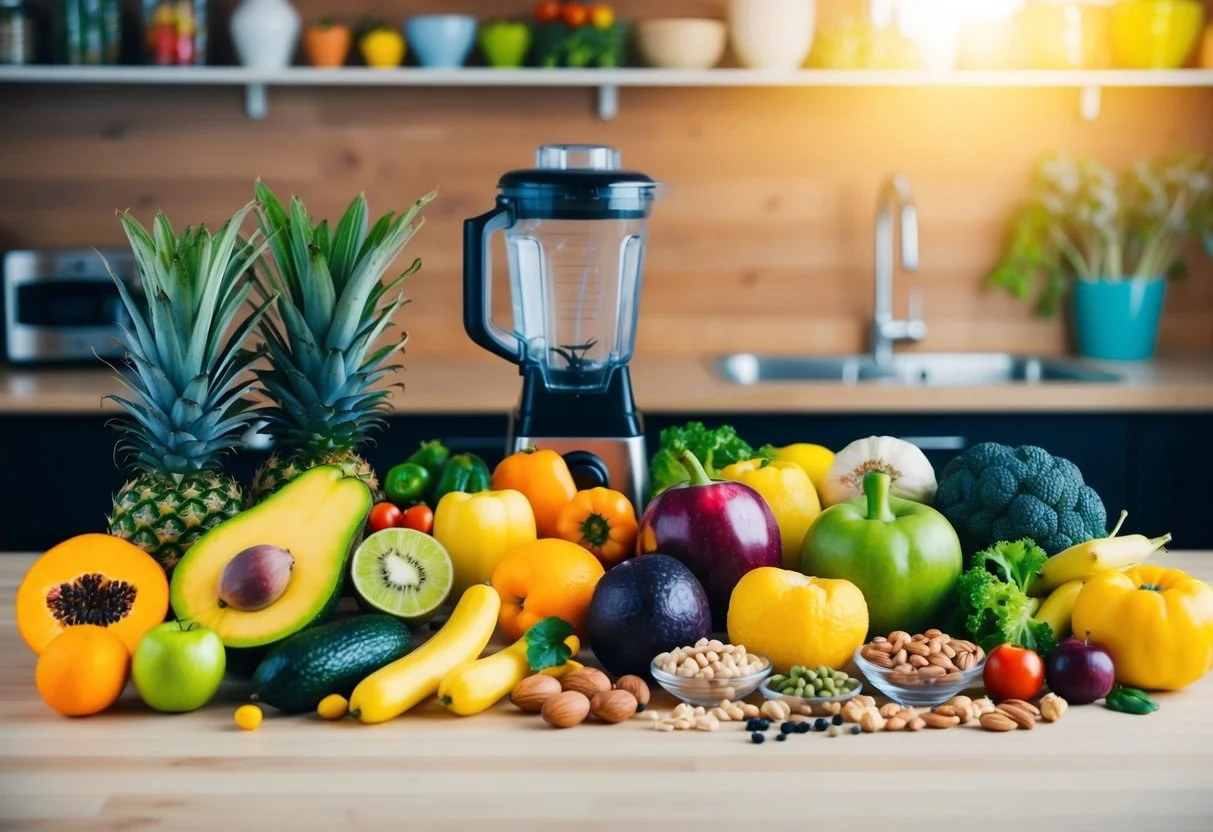
Creating high-fiber drinks can be both satisfying and nutritious. By focusing on texture, enhancing nutritional value, and proper storage, anyone can craft a perfect high-fiber beverage.
Achieving the Right Texture
A smooth and enjoyable texture is key to a high-fiber drink. To achieve this, blend ingredients thoroughly. Start by adding liquid, like almond milk or coconut water, before heavier items. For creaminess, consider using nut butter, such as almond butter, or yogurt.
Fruits like bananas or avocados also contribute to a smooth consistency.
To add fiber while maintaining texture, include items like chia seeds or oats. They thicken the drink as they absorb liquid, so it’s important to blend well. For a lighter drink, limit high-fiber additions to avoid a gritty texture.
Enhancing Nutritional Value Without Extra Calories
Incorporating high-fiber fruits without adding excess calories is simple. Raspberry-kefir power smoothies are a great example; kefir adds gut-friendly probiotics with minimal calories.
Using chia seeds is another excellent choice. Just a tablespoon adds significant fiber and healthy fats, promoting satiety.
Adding leafy greens like spinach can boost vitamins and minerals without many calories. It’s loaded with potassium and other essential nutrients.
Experiment with various combinations, but watch portion sizes. This ensures drinks stay nutritious without becoming calorie-dense.
Storing and Preserving Your Smoothies
Proper storage can extend the freshness of high-fiber drinks. If a smoothie must be saved, keep it in an airtight container in the fridge. This helps maintain freshness for up to 24 hours.
To preserve texture, consider adding ingredients like oats or chia seeds just before drinking. These can absorb moisture over time, altering the drink’s consistency.
Freezing smoothies is another option. Pour into ice cube trays for convenient portions. When ready to consume, blend with a small amount of liquid to refresh the texture.
By following these tips, high-fiber drinks can be delicious and nutritious, ready to enjoy any time.

